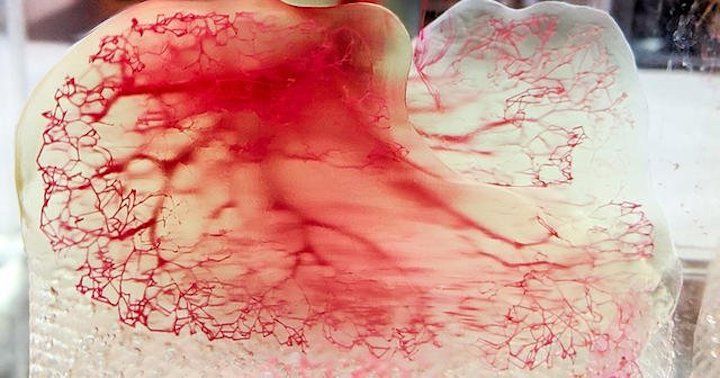
3D Systems announced a “significant” expansion into bioprinting applications.
The company has long been one of the largest 3D printer manufacturers, having originated with the original inventor of the SLA process. Over the years they’ve diversified their technology portfolio by adding a number of 3D printing processes for industrial and professional applications.
In recent years, however, I’ve noticed a particular lean towards healthcare applications. While their financial results have been mostly static for years, the healthcare component has been growing and perhaps their strongest play. A few years ago I even wrote a story speculating that they may eventually transform into a healthcare company.
That hasn’t happened, at least not yet. However, the company took a step further with last week’s announcement.
About a year ago 3D Systems partnered with several related companies. One of them, CollPlant, is working on bioprinting tissue and organs, specifically making a proprietary recombinant human collagen (rhCollagen) that is specifically used for bioprinting applications. Evidently the work done in these partnerships yielded notable technology breakthroughs.
3D Systems said:
“3D Systems today announced its decision to significantly expand its development efforts focused on regenerative medicine and bioprinting solutions. This decision was driven by the tremendous progress made in collaboration with United Therapeutics Corporation (NASDAQ:UTHR) and its organ manufacturing and transplantation-focused subsidiary, Lung Biotechnology PBC, on the development of 3D printing systems for solid-organ scaffolds. Leveraging this work as well as accomplishments with additional partners, 3D Systems intends to invest, further develop, and commercialize solutions for the diverse application opportunities in regenerative medicine, including the development of non-solid organ applications requiring biologically sustainable vasculature.”
Evidently they have developed a feasible solution for 3D printing lung tissue by combining the technologies from their partners. They said:
“In 2020, 3D Systems and United Therapeutics achieved significant progress in the development of a next-generation additive manufacturing platform solution for lung scaffolds that is capable of full size, vascularized, rapid, micron-level printing.”
And:
“3D Systems has built a portfolio of unique capabilities specifically designed to address the requirements of regenerative medicine applications. The newly developed Print to Perfusion process enables 3D printing of high-resolution scaffolds which can be perfused with living cells to create tissues. The ability to print large, vascularized, highly detailed hydrogel scaffolds at rapid speeds is now opening new opportunities for a range of tissue applications.”
3D Systems is adapting their Figure 4 automated 3D printing system to enable larger-scale bioprinting operations. The powerful Figure 4 system should be a good match for these requirements, as it has the ability to be configured for multi-step processes that are likely required for bioprinting.
This is a highly strategic move by 3D Systems, as it could set the long-term target for the company: bioprinting. There are countless potential applications of this technology, if they can continue to develop it, and they could create a massive worldwide market for 3D printed tissues.
Perhaps this is another reason 3D Systems’ stock price has been ticking higher in recent weeks.
Via 3D Systems
